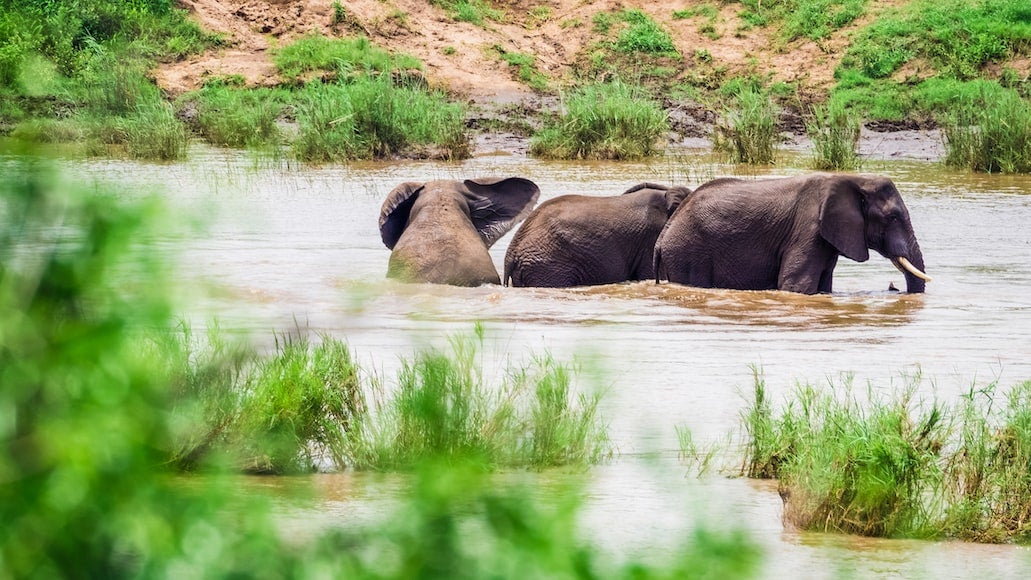Zimbabwe eyes carbon credits model as it seeks to unlock value from seized ivory
International bans on selling raw ivory force countries needing conservation cash to look for innovative financing ideas

By Tatira Zwinoira for The Zimbabwe Independent
Zimbabwe’s government is currently engaged in discussions on how the country can use its 130-tonne ivory stockpile as a tradable commodity or security asset, the Zimbabwe Independent can report.
This follows the release of gold coins called the ‘Mosi Oa Tunya Gold Coins’ on July 25, by the Reserve Bank of Zimbabwe (RBZ).
Each coin has a 22 carat gold purity, weighs 33.93 grammes and is valued at one ounce of gold based on international prices. The gold coin can be bought in either local or foreign currency and are tradable internationally.
Thus, looking to imitate the gold coins, the Ministry of Environment, Climate, Tourism, and Hospitality Industry has set up a team expected to engage Zimbabwe’s Treasury and RBZ on how to make use of the multi-million dollar ivory stockpile.
“I have a team of experts looking into it. We think it can work. We know it can work but the challenge is that there are so many restrictions on ivory trade,” Environment, Climate, Tourism, and Hospitality Industry minister, Nqobizitha Mangaliso Ndhlovu, said in an interview.
“Our team is working closely with (the Ministry of) Finance to see how we can come up with an
instrument that can unlock some bit of value but it’s early days. We want to monitor the uptake of the gold coins.
“I will be getting feedback from the team in a few weeks’ time in terms of what their recommendations are, and then we analyse to see what we can adopt,” he added.
The coin is not just sold for an ounce of gold as it also attracts a 5% RBZ production cost and bank charges for financial institutions who sell the coins.
In the local currency the coin is currently valued at nearly ZWL910 000 while in foreign currency it’s US$1,849.31 and GBP1,521.69.
The gold coins are meant to wipe out excess liquidity of over ZW$1 trillion (US$2,48 billion) money supply that the RBZ has recorded.
Based on prices of ivory in a report from the Dutch organization, the Wildlife Justice Commission, Zimbabwe’s ivory stockpile could be worth in the region of US$10.4 million. This is based on an average price of US$80 per kg for wholesale raw ivory sold in two unnamed southern African countries referenced in their report. The Zimbabwe government calculates its ivory stockpile is worth in the region of US$600 million.
Traditionally, Vietnam, China and Japan were the top markets for ivory, but China and Vietnam have both banned trade in ivory, and Japan has said it has enough supply from earlier sales and needs to buy no more for now. This means the only viable market for ivory today is through illegal sales. This compels countries like Zimbabwe to seek other ways to monetise what it considers to be an asset with value others can invest in.
“It’s a number of areas that we are trying to unlock value in, including carbon credits. We are also exploring ‘ivory credit’ that can be traded more like carbon credit,” Ndhlovu said.
“I think the team will come up with the best options that we can discuss with the RBZ or Ministry of Finance.”
A March 2022 report titled What Are Carbon Credits, and How Can They Slow Climate Change, done by the United States-based social enterprise, TerraPass, said carbon credit is created when one metric tonne of carbon dioxide is removed from, or prevented from entering the atmosphere through an emission reduction programme.
TerraPass said project developers could sell carbon credits to fund current or future carbon offset projects.
Thus, the Environment Ministry is looking at how the concept of similar credits can be actualised for ivory.
“Ivory is a bit tricky given that CITES (UN’s Convention on International Trade in Endangered Species of Wild Fauna and Flora) has not granted permission to trade in ivory, it is still not permissible,” economist Godfrey Kanyenze said, adding that even if it was done locally, ivory trading would be problematic as this could fuel illicit activities.
“It would encourage all sorts of activities that may not necessarily be legal so everyone would want a slice of the cake as it were, which is where I would foresee problems,” Kanyenze said.
“I think part of the strategy should be what has happened in the Kruger Park, where it has been opened up so that the animals could roam about across borders…it always allows them to move more freely to areas of a lower population.”
The reason why the Zimbabwean government seeks to make use of its ivory stockpile is to raise money for conservation efforts as the country now battles an elephant population of 100,000, against an ecological carrying capacity of 45,000, according to the Environment ministry.
In May, an African Elephant Summit was held at the Hwange National Park, where Botswana, Namibia, Tanzania, Zambia and Zimbabwe endorsed a declaration to find ways of using their wildlife despite CITES restrictions.
CITES was enforced on July 1, 1975, to protect endangered wildlife animals and later banned ivory trading in 1989.
The last time CITES was successfully pressured to allow the sale of ivory was in 1999 and 2008 when one-off sales from four Southern African countries to China and Japan were approved.
This article is reproduced here as part of the African Conservation Journalism Programme, funded in Angola, Botswana, Mozambique, and Zimbabwe by USAID’s VukaNow: Activity. Implemented by the international conservation organization Space for Giants, it aims to expand the reach of conservation and environmental journalism in Africa, and bring more African voices into the international conservation debate. Read the original story here.
Join our commenting forum
Join thought-provoking conversations, follow other Independent readers and see their replies
Comments
Bookmark popover
Removed from bookmarks